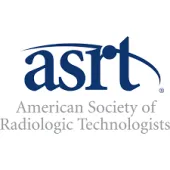
Fluoroscopy Safety Protocols- Principles & Applications: Part 2
Credits
- 0.75 ASRT Category A
About this Program
This program will provide a history of early fluoroscopes, and the basic principles of fluoroscopic function. The components, particularly the image intensifier, and how they convert x-rays to visible light will be discussed. Modern fluoroscopes have new features that technologists need to be aware of; these advanced elements will also be covered. The importance of the use fluoroscopy for various imaging procedures will be covered as well.
Agenda
- Principles & Applications
- Limitations Early Fluoroscopes
- Fluorescent screens
- Ambient light
- Radiologist Dose
- Principles of Fluoroscopy
- X-ray Tube, Low Tube Current
- Fluorescent Screens
- Noisier, Real-time Images
- Modern Features
- AEC
- Last Image Hold/Frame Averaging
- Electronic Collimation
- Applications
- GI Studies
- Myelography
- Arthrography
How it Works:
- The On Demand CE activity that you purchased will be located in your “My Account” section once you log into the MTMI Website.
- You have three attempts to pass each quiz.
- You must earn a score of 75% or higher.
- Credit is recorded the day you submit and pass the quiz and is determined using Central time.
- You have 30 days to complete and pass the quiz.
- Once passed, access your MTMI “My Account” to print your “Certificate of Completion.”
- This video expires 1 year after purchase date.
Educational Objectives
At the completion of this program, participants will:
- Recall how an x-ray image is converted to visible light
- List the sources of image contrast
- Describe the limitations of early fluoroscopes
- Select the typical tube energy (kVp) range for fluoroscopy
- Identify the various components of a fluoroscope
Program Faculty
Meet your presenter(s)
Joseph Mahoney
DABR
Credits
Accredited training programs

ASRT Category A
This program provides 0.75 hour(s) of Category A continuing education credit for radiologic technologists approved by ASRT and recognized by the ARRT® and various licensure states. Category A credit is also recognized for CE credit in Canada. You must attend the entire program to receive your certificate of completion.












